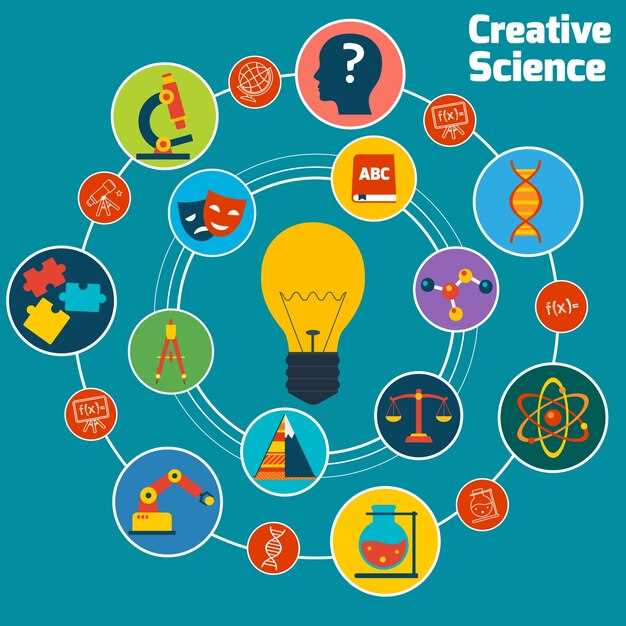Set a strict cap on daily hours spent consuming content from public figures: 30 minutes maximum, followed by a five-minute reflection. Use a timer and observe how your mood changes after each session.
What you feel in response is a one-sided bond with someone who doesn’t know you personally. Treat this as admiration rather than a substitute for real friendships. Emotional chatter around their life can feel comforting, but it may distort expectations about privacy, intimacy, and reciprocity.
Data from youth studies show that roughly half of young people report emotional responses to figures they follow; higher engagement tends to coincide with more mood fluctuations, whereas balanced consumption of educational or charitable posts aligns with steadier days. Nightly exposure to sensational content is linked to poorer sleep and daytime irritability in several samples.
Practical steps: audit your feeds weekly, mute or unfollow accounts that trigger envy or loneliness; diversify sources to include practical skills or wide-ranging perspectives; implement a hard “turn-off” rule and commit to at least one offline activity per day; keep a simple mood log to spot patterns. A two-way reality check reminds you that public figures rarely know your name or day-to-day life.
For families and educators, teach media literacy: show how framing works, discuss the difference between curated posts and lived experience, and coach critical reflection before resharing. Encourage real-world hobbies and regular conversations with friends or mentors. Build a small network of dependable people to reach out to during moments when online voices feel compelling.
If persistent feelings of loneliness or mood dips occur, seek support from a counselor or doctor and connect with trusted peers for in-person interaction. Real life benefits from sustained presence and meaningful connections beyond screens.
Parasocial Relationship Impact: A Practical Guide
Set a fixed limit: cap exposure to a single creator to 60–90 minutes per day and log sessions to review motivation weekly.
Audit your usage and build a plan to diversify attention toward real-life connections and varied media consumption.
- Time-tracking: For 7 days, record minutes spent with top accounts, the types of content, and actions such as comments or messages.
- Cooldown rule: Before posting or replying, pause for 5 minutes and state the goal; articulate a clear purpose or skip the action.
- Real-life social activity: schedule at least two in-person or voice conversations per week with friends or family to fulfill social needs.
- Session intent labeling: classify each session as learning, entertainment, inspiration, or mood boost; avoid using content solely to escape.
- Post-session reflection: ask what need was satisfied and identify one real-world activity to meet it instead.
- Teens: enable built-in limits; assign a daily media window (60–90 minutes) and turn off access after 21:00 to support sleep.
- Adults: schedule a weekly review to adjust limits and monitor mood shifts; keep a short diary to log triggers.
- Creators: publish guidance that promotes balanced use and encourage offline activities; avoid relying on a single audience for feedback.
Track these metrics to guide adjustments: daily minutes with top accounts, number of direct replies sent, mood rating after each session (1–5), and the average weekly satisfaction score. Targets: reduce time with a single source by 25% within 4 weeks; keep total daily exposure under 120 minutes; limit direct interactions with one source to 3 times per week.
- Persistent irritability after sessions
- Neglect of real-life duties
- Anxiety or restlessness when access is restricted
- Sleep disruption linked to late-night viewing
Following this framework helps preserve autonomy, improves sleep, and maintains social life while enjoying media content.
Identify signs of parasocial influence in daily decisions and routines
Begin a 14‑day audit of daily choices shaped by public figures. Keep a simple log with fields: activity (watch/listen/read), trigger (notification, clip, post), concrete choice (brand, schedule, purchase, policy), outcome (satisfaction, regret, savings), and mood before and after.
Content release schedules steer day planning–meals, workouts, or leisure blocks shift to align with a figure’s new content cycle. Outfits, accessories, or home choices mirror promoted aesthetics. Product or brand preferences tilt toward items featured or promoted by the figure. Language borrowed from the figure becomes habitual in conversations or self‑talk. Anticipation drives impulsive decisions around launches or limited editions.
Purchases, subscriptions, or paid memberships rise after a mention or review. Discounts linked to content can prompt delaying or accelerating purchases. Time spent exploring related services may grow as you seek alignment with the promoted persona’s recommendations.
Emotional cues include mood shifts tied to new drops; relief after bingeing content; irritation when the feed is quiet. Seeking social reinforcement through questions or comments to draw attention or validation from the figure’s audience can become a routine. Self‑talk may adopt phrases or tones used by the featured presenter, even in private planning or decision moments.
Before following lifestyle advice: verify claims with independent sources; watch for disclosures of sponsorships; avoid major changes based on a single source; compare with guidance from qualified experts. Track whether a recommendation appears alongside a clear value or a paid promotion, and weigh long‑term costs versus short‑term gains.
To reclaim autonomy: limit push notifications; designate content‑free blocks in the day; diversify sources to reduce bias; implement a 24‑hour delay for costly actions and create a personal decision checklist that emphasizes personal priorities, budget, and wellbeing.
If three or more indicators persist for two weeks, reduce exposure to the figure, discuss patterns with a trusted friend or mentor, and reallocate time to offline activities that support independent preferences and safety nets for decisions.
Establish and maintain healthy boundaries with creators and communities
Limit daily engagement with creators to 30 minutes and disable nonessential notifications after the window; use a timer to enforce the cap and schedule a fixed engagement window on your calendar.
Do not disclose home address, phone numbers, or financial details; use an alias for public profiles, and a separate email for signups; review privacy settings to restrict direct messages from unfamiliar accounts and disable auto-accept for new followers.
Keep private life separate from fan spaces by maintaining distinct accounts or profiles; avoid linking work and personal life in public threads; set a policy for what can be shared in chats, and routinely prune connections that blur lines.
Set a monthly cap on gifts or paid access; if you contribute, track expenditures and set a max limit (for example, 50–100 USD per month) and avoid multi-platform commitments you can’t sustain; keep a simple ledger.
Choose specific activities in communities and stick with them: participate in at most three live sessions per week, contribute to discussions on topics you value, and avoid off-topic entanglements; schedule time for reflection away from screens.
Use moderation tools to protect your space: mute streams or chats, restrict visibility to followers only, block abusive users, and report harassment; maintain a running log of interactions that felt intrusive.
Communicate your limits clearly and briefly to creators or mod teams: a short note that outlines what topics you engage with, how you prefer to be addressed, and the times you are available; keep replies polite and direct.
Be alert for warning signs that a pattern is harming you: rising anxiety before engagement, sleep disruption, compulsive checking, or feeling drained after sessions; if any appears, pause engagement for 24–72 hours and review the boundary plan.
When a boundary is violated, document the incident, block or mute the user, and report to the platform if necessary; seek support from trusted friends or a counselor, and reassess your participation strategy with the creator community.
Protect mental wellbeing: coping strategies and when to seek support
Set a daily cap on exposure to clips and posts featuring a favorite media figure: 60 minutes total, split into two blocks, with a one-hour break before bed. Use a timer and log the time to stay accountable, and substitute the second block with a non-screen activity if craving returns.
Θεσπίστε σταθερά όρια πέριξ των συσκευών: ορίστε ζώνες χωρίς οθόνη (υπνοδωμάτιο και γεύματα), απενεργοποιηστε μη απαραίτητες ειδοποιήσεις κατά τις ώρες αιχμής κυκλοφορίας και κρατήστε τη συσκευή εκτός εμβέλειας για χαλάρωση. Εξετάστε τη λειτουργία του γκριζου ή ένα χρονοδιαγραμματισμένη λειτουργία για μην ενόχληση.
Όταν οι επιθυμίες αυξάνονται απότομα, χρησιμοποιήστε τεχνικές προσγείωσης: εξασκήστε την αναπνοή 4-7-8 για δύο λεπτά. εκτελέστε ένα γρήγορο απόθεμα 5 αισθήσεων (ονομάστε πέντε πράγματα που μπορείτε να δείτε, τέσσερα που μπορείτε να αγγίξετε, τρία που μπορείτε να ακούσετε, δύο που μπορείτε να μυρίσετε, ένα που μπορείτε να δοκιμάσετε). γράψτε τι είναι βέβαιο και τι είναι αβέβαιο για να διαχωρίσετε το γεγονός από την αντίληψη.
Προστατέψτε τον ύπνο και τη διάθεση με ρουτίνα: στοχεύστε σε 7–9 ώρες ύπνου, διατηρήστε σταθερή ώρα αφύπνισης και αποφύγετε την καφεΐνη μετά τα μέσα του απογεύματος. Μια σταθερή νυχτερινή ρουτίνα βελτιώνει τη συναισθηματική ρύθμιση και μειώνει την κύλιση αργά το βράδυ.
Βασιστείτε σε έμπιστα άτομα και κοινότητες που προάγουν την ισορροπημένη ενασχόληση: μοιραστείτε τα συναισθήματά σας με έναν φίλο ή μέλος της οικογένειας. συμμετάσχετε σε συντονισμένες ομάδες που ενθαρρύνουν τα υγιή όρια. κρατήστε ένα αρχείο καταγραφής των εναυσμάτων για να τα συζητήσετε με έναν κλινικό γιατρό, εάν χρειάζεται.
Η εκπλήρωση εκτός σύνδεσης έχει σημασία: προγραμματίστε τακτική σωματική δραστηριότητα, χρόνο στη φύση, χόμπι ή εθελοντισμό. Τρώτε τακτικά, ισορροπημένα γεύματα, μείνετε ενυδατωμένοι και περιορίστε το αλκοόλ ή άλλες ουσίες που μεταβάλλουν τη διάθεση, οι οποίες μπορούν να ενισχύσουν τη δυσφορία όταν η έκθεση είναι υψηλή.
Πότε να αναζητήσετε υποστήριξη: εάν η δυσφορία επιμένει για περισσότερο από δύο εβδομάδες, έχετε πρόβλημα να λειτουργήσετε στην εργασία ή το σχολείο ή αντιμετωπίζετε επίμονες διαταραχές ύπνου, άγχος ή καταθλιπτικά συμπτώματα, κλείστε μια διαβούλευση με έναν πάροχο πρωτοβάθμιας περίθαλψης ή έναν επαγγελματία ψυχικής υγείας. Εάν υπάρχουν σκέψεις να βλάψετε τον εαυτό σας ή άλλους ή αισθάνεστε ανίκανοι να παραμείνετε ασφαλείς, αναζητήστε άμεση βοήθεια μέσω των τοπικών υπηρεσιών έκτακτης ανάγκης ή μιας τηλεφωνικής γραμμής κρίσεων.

 Parasocial relationship impact">
Parasocial relationship impact">

 Attraction science tips">
Attraction science tips">
 Dating stress and career balance">
Dating stress and career balance">
 Emotional intelligence in relationships">
Emotional intelligence in relationships">